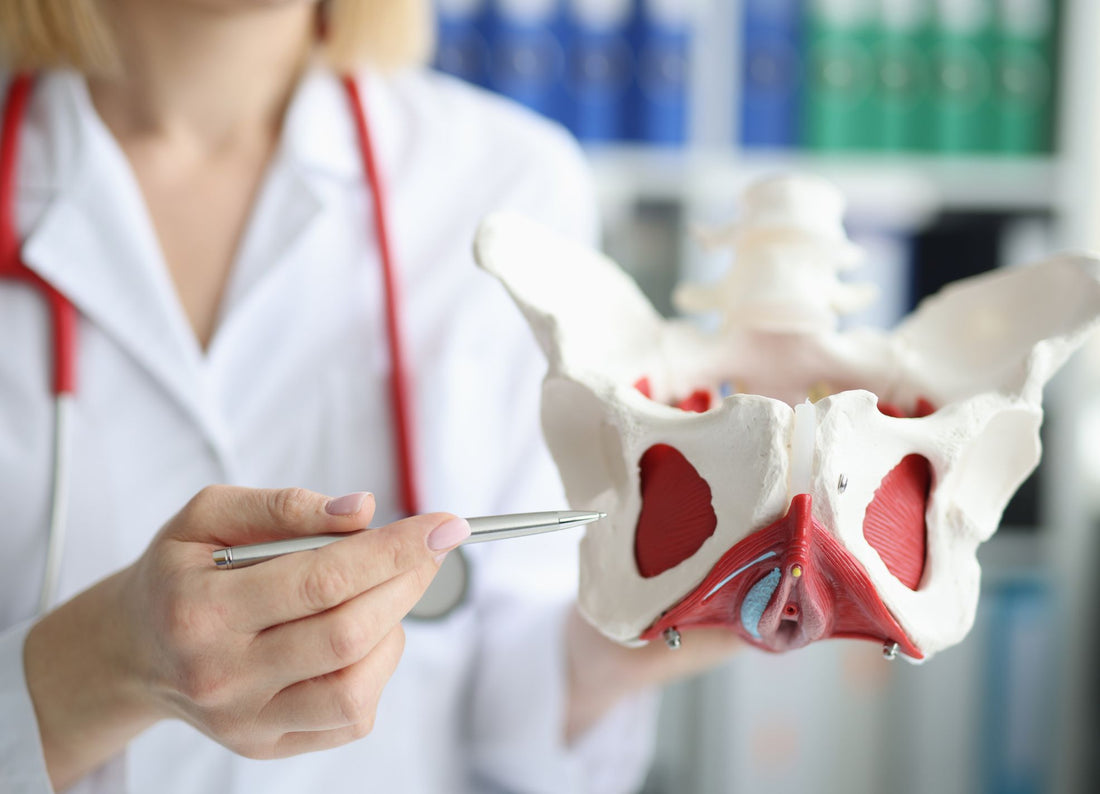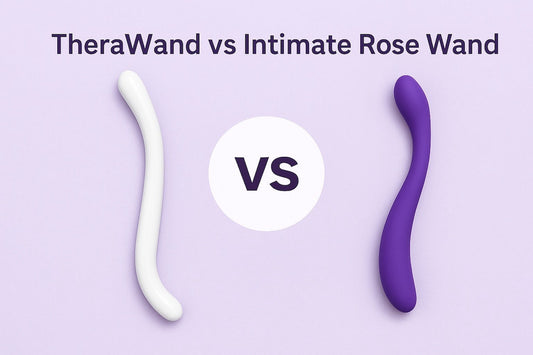An occasional vibrating or mild tingling sensation in the pelvic area is usually nothing to be concerned about. The feeling normally stems from a pelvic muscle spasm and comes and goes, similar to how an eyelid muscle or arm muscle can twitch or spasm. When a vibration feeling in the pelvic area or vagina becomes more regular or intense, however, it could be a symptom of an underlying condition that requires treatment.
Read on for more insight into a vibration feeling in the pelvic area or vagina, what causes it, and what you can do about it.
Is a Vibrating sensation in the Pelvic Area Common in Women?
It is common for a slight vibrating feeling to come and go in the female pelvic area, with most cases occurring in women between the age of 40 and 80. Medical experts believe this is due to the after-effects of childbirth, pelvic injuries, surgeries, or the aging process. It should be noted, however, that even though a sense of vibrating in the pelvic area is often known to increase in frequency and intensity as women age, it is not something that should be accepted as part of life.
Treatment for frequent and painful vibrations in the vagina is available and is highly effective for the majority of women.
What Causes the Vibrating Feeling that Comes & Goes in the Vagina?
Although the root cause of a vibrating, buzzing, or tingling sensation in the vagina or pelvic area is not always clear, vaginal vibrations can be categorized into two categories - those that are mild and sporadic (come & go) and those that are more frequent and intense. When vibrations in the vagina are mild and sporadic, the cause is commonly linked to one of the following:
Entrapped Nerve or Muscle Spasm
An entrapped nerve or muscle spasm in the pelvic area is a common cause of a buzzing or vibrating feeling in the vagina. Typically caused by sitting for too long on a hard surface, cycling, or horse riding for long periods of time. Once the nerve or muscle relaxes, the sensation typically subsides.
Too Much Alcohol or Caffeine
Consuming too much alcohol or caffeine can cause dehydration which leads to muscle spasms or cramps anywhere in the body, including the pelvic floor. Once the body is rehydrated, however, the intermittent vibrating sensation in the vagina normally goes away.
Stress and Anxiety
Stress and anxiety are known to cause muscle spasms in any part of the body. Essentially, when the brain detects stress it sends signals through the physical body that sometimes activate muscle spasms. Relaxation-inducing techniques like yoga, meditation, and conscious breathwork can help to alleviate stress-related vibrations in the vagina.
Side Effects of Medications & Hormone Therapy
Certain medications and hormone therapy are known to cause pelvic muscle spasms that often result in a vibrating sensation in the vagina. If you sense a connection between any new medication or hormone therapy and vibrating in your vagina, speak with your doctor about altering your dose or medication.
How to Treat Sporadic Vibrating in the Vagina
When a vibrating feeling in the vagina comes and goes without causing intense pain it is important to visit your doctor for further testing. If there is no evidence of an underlying condition, it may be still advised to see a pelvic floor physical therapist. treatment Making certain lifestyle changes can certainly help to minimize the sensation. For example, eating a balanced diet, staying hydrated, practicing relaxation techniques, and getting enough sleep.
Causes of Frequent & Painful Vibrating Feelings in The Vagina
Vaginal vibrations that are frequent and painful are generally linked to pelvic floor dysfunction or a neurological disorder. Each requires a diagnosis and some form of treatment or symptoms will worsen over time.
Neurological Disorders
Various neurological disorders are known to cause a tingling, vibrating, or numb sensation anywhere in the body including the vagina, but particularly in the arms, legs, feet, and hands. Known as paresthesia, many people experience the sensation temporarily in the form of “pins & needles”, however, chronic paresthesia is typically a symptom of neurological disorders affecting the brain or spinal cord.
That said, a vibrating sensation in the vagina on its own would not typically be considered an indicator of a neurological disorder. However, if you notice any additional symptoms like a sudden lack of coordination, headaches, memory loss, or double vision, schedule an appointment with your doctor for a check-up.
Pelvic Floor Dysfunction
Although it can be painful, sounds serious, and is often embarrassing, pelvic floor dysfunction can be successfully treated and later managed in the privacy of your own home once diagnosed. It is important, however, to establish if your pelvic floor dysfunction is caused by underactive pelvic floor muscles or overactive pelvic floor muscles, as treatment will be different for both.
Some women suffer from both overactive and underactive pelvic floor muscles so it is imperative to consult with a pelvic health physical therapist for a correct diagnosis before beginning treatment.
To comprehend the difference between overactive and underactive pelvic floor muscles, it helps to understand that the pelvic floor muscles are like a hammock that stretches from the tailbone to the pubic bone and from one side of the pelvis to the other. This hammock of muscles and ligaments acts as a supportive sling to pelvic organs like the bladder, bowel, rectum, uterus, and reproductive organs, including the vagina. Therefore, when pelvic floor dysfunction is diagnosed, it means the “hammock” of pelvic muscles is not behaving in the way that it should.
How to Treat Underactive Pelvic Floor Muscles?
Underactive pelvic floor muscles are described as weak and unable to perform in a coordinated manner. The weakening is typically due to childbirth, a pelvic injury, pelvic surgery, radiation treatment, or the aging process. Symptoms can include urinary incontinence, an overactive bladder, fecal incontinence, muscle spasms, vibrating in the vagina, loss of libido, hip & lower back pain, as well as pelvic organ prolapse.
As treatment, pelvic health physical therapists typically recommend Kegel weights to help patients become more aware of the pelvic floor muscles as well as to strengthen and re-train them. Usually sold in sets of incrementally increasing weights, Kegel weights help to ensure that the pelvic floor muscles are engaged and Kegel exercises are being practiced correctly. Engaging the pelvic floor muscles to hold the Kegel weight in place also increases muscle resistance for better healing.
Where to Buy the Best Kegel Weights?
Our preference for treating underactive pelvic floor muscles is the Silicone Kegel Weight set from Intimate Rose. Designed by a pelvic health rehabilitation specialist and made from body-safe, medical-grade silicone that is FDA-registered, the Intimate Rose Kegel weights feel gentle against sensitive vaginal skin, come in sets of progressive weights, and in our experience, are highly effective in strengthening weak pelvic floor muscles.
How to Treat Overactive Pelvic Floor Muscles?
Overactive pelvic floor muscles are typically tight and unable to relax when required. This overactivity, which can commonly cause frequent and painful vaginal vibrations can be an underlying symptom of many pelvic conditions. These include chronic pelvic pain, endometriosis, interstitial cystitis, pain during sex (dyspareunia), pain during penetration (vaginismus), pelvic floor myalgia, and vulvodynia.
Overactive pelvic floor muscles can also be the result of frequent heavy lifting, pelvic surgeries, radiation treatment, obesity, or repeated straining from regular bouts of constipation.
Treatment options recommended by pelvic health physical therapists normally include warm baths, relaxation techniques, dilation therapy to relax the vaginal muscles, and pelvic wands to massage any trigger points in the pelvic muscles that could be causing painful vaginal vibrating.
When Additional Symptoms Mean Something Else
If a vibrating sensation in the vagina is accompanied by an unusual vaginal discharge, blood in the urine, a burning sensation when urinating, or vulvar itching, it is best to consult with a doctor. These symptoms are often signals of a vaginal infection, urinary tract infection (UTI), or sexually transmitted infection (STI). Although a sense of vibrating in the vagina is not typically a symptom of a vaginal infection, irritation from the infection could present as a buzzing or tingling in the vagina.
Vaginal infections, UTIs and STIs require typically require antibacterial or antifungal medication as treatment or symptoms will worsen over time.
Conclusion
When a vibration feeling in the vagina comes and goes it is typically due to a muscle spasm and is not normally a cause for concern. A frequent and painful vibration feeling in the vagina, however, particularly when accompanied by additional symptoms, could be an indicator of pelvic dysfunction due to underactive or overactive pelvic floor muscles.
If vaginal vibrations become painful or intense and significantly affect your quality of life, take some time to consult with a pelvic health physical therapist for treatment options. Vaginal vibrations are not something women have to live with. Significantly effective treatment options are available.
References
Medical News Today – Vibrating Vagina - https://www.medicalnewstoday.com/articles/vibrating-vagina#seeing-a-doctor
Healthline - What Causes a Vibrating Sensation in the Vagina? - https://www.healthline.com/health/vibrating-vagina#see-a-doctor
Cleveland Clinic – Muscle Spasms - https://my.clevelandclinic.org/health/diseases/15466-muscle-spasms
National Institute of Neurological Disorders & Stroke – Paresthesia - https://www.ninds.nih.gov/health-information/disorders/paresthesia
Healthline – Pelvic Floor Dysfunction - https://www.healthline.com/health/pelvic-floor-dysfunction



